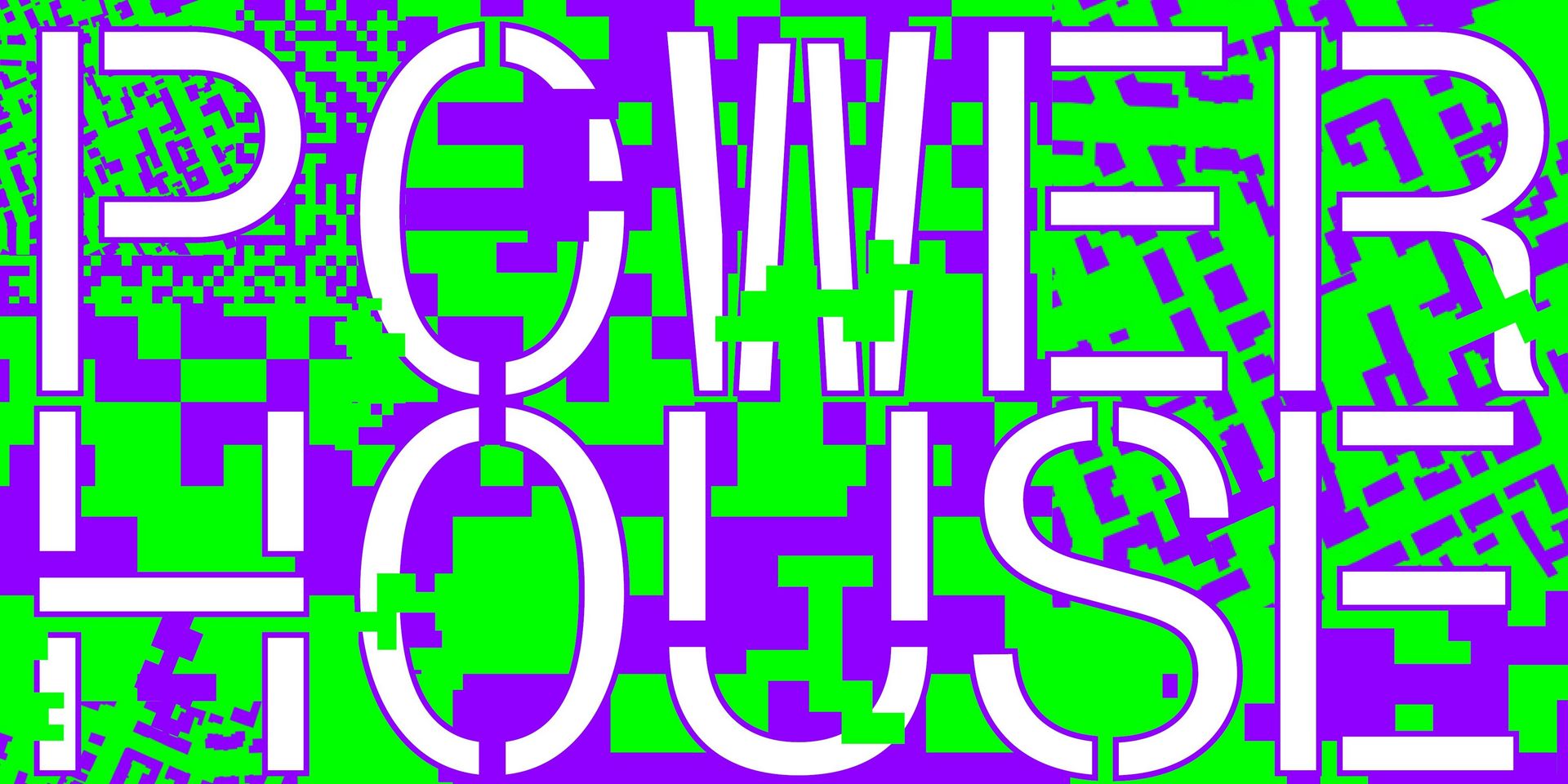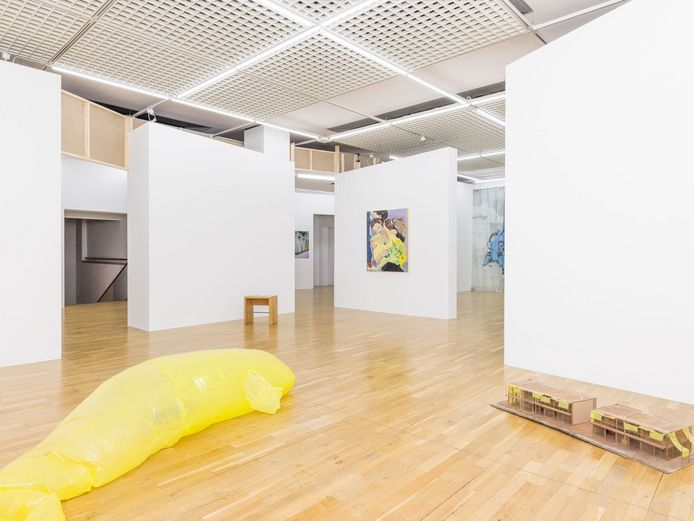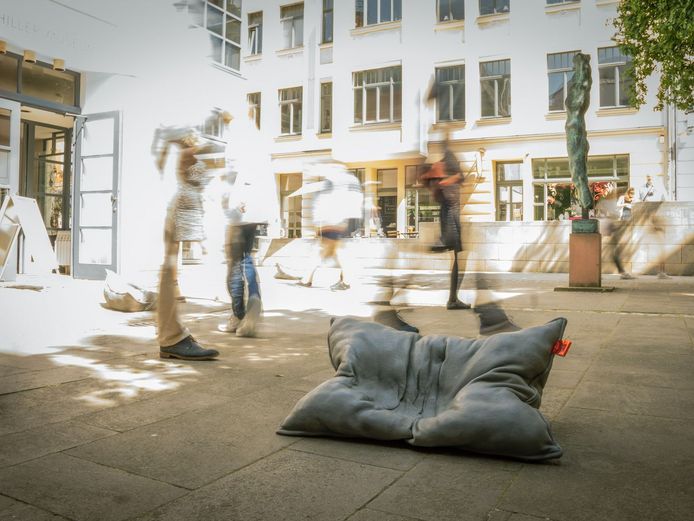Projects of the Klassik Stiftung Weimar are funded by the European Regional Development Fund (ERDF) and the Free State of Thuringia, represented by the State Chancellery of Thuringia, Department of Culture and the Arts.


With the exhibition titled POWER HOUSE, nova space, the university gallery of the Bauhaus-Universität Weimar, is moving into the Schiller-Museum to mark the one hundredth anniversary of the first Bauhaus exhibition in 1923.
The program presented there bundles creative energies from the four faculties of the university and offers a platform for the art, design, architecture and research currently created on campus to come into contact with external guests and visitors.
Based on the annual theme of the Klassik Stiftung Weimar - WOHNEN - the exhibition examines forms, definitions and states of spaces and our (re)location within them. It celebrates the 100-yearanniversary of the first ever Bauhaus exhibition in 1923, in which the school first opened up to the public.
The term POWER HOUSE is on the one hand borrowed from Pilates, where it describes the energetic center of the body; on the other hand, it is familiar in wrestling, where it describes fighters who stand out due to their special physical strength. Analogous to a "Power Station", the POWER HOUSE can also symbolize a power plant in which new energy is generated.
Based on these ideas, nova space becomes the energetic powerhouse of the exhibition, a place for actions, performances and experiments, but also for encounters, interaction and exchange. At the same time, the exhibition space is subject to perpetual change during its runtime. As a nucleus of creative output, it grows and proliferates organically, extending beyond the public space to the university campus.
The exhibition will be accompanied by an extensive program of lectures, screenings, performances and workshops.
Curated by Katharina Wendler
Schillerstraße 12
99423 Weimar
Free entry
Mirsini Artakianou, Detel Aurand, Margret Blöndal, Felix Deiters, Anna Miklavcic, Ioannis Oriwol, Leon Purtscher, Till Röttjer, Masami Saito, Martha Steinmetz, Rio Usui, Khashayar Zandyavari
EPISODE 01 - where do we grow from here is the first chapter of the exhibition POWER HOUSE, with which nova space, the university gallery of the Bauhaus-Universität Weimar, is a guest at the Schiller Museum on the occasion of the 100th anniversary of the first-ever Bauhaus exhibition.
The starting point for this inaugural presentation is to briefly pause and reflect on the questions of where we stand and where we want to go. Never before have there been more people on our planet than now. Resources have never been more contested, space scarcer, environmental changes more palpable than in the present. Growth and development are ubiquitous terms, but where and how do they become visible?
The exhibition circles around aspects of physical, organic, but also mental, personal and digital growth. It considers the connection and discrepancy between measurable expansion (and the values and definitions we have set for it) and experienced, felt growth, and the impact of these apparent opposites on our living spaces. Icelandic writer and climate activist Andri Snær Magnason, for example, pointed out in his book ‘Dreamland’ (2006) that we judge a nation's success and prosperity almost exclusively by (measurable) factors such as economic growth or gross domestic product, without considering (non-measurable, experienced) aspects such as satisfaction or happiness within the population or the health of the environment.
Moreover, we are not even aware of many extensive growth processes because they take place on the smallest scale and are not visible to the human eye. The spread of fungi, viruses and bacteria, for example, is hardly perceptible to us, even though it is the basis of life for many species. Similarly, the inexorable increase in digital data volumes remains abstract and invisible, manifesting itself at best on full storage media, while space in the clouds continues to grow unabated.
where do we grow from here is a continuation of the question Walter Gropius posed in 1919 before founding the Staatliches Bauhaus: "How will we live, how will we settle, what forms of community will we strive for?" The exhibition also hints at African-American human rights activist and Nobel Peace Prize winner Martin Luther King Jr.'s manifesto titled ‘Where do we go from here: Chaos or Community’, which in 1968 addressed issues of social justice and belonging, among others. Now, in 2023, a new generation is raising the same questions about how we want to move forward from where we stand, how we want to develop, grow and evolve as individuals but also as a society, and what aspects play a particular role in that process.
The exhibition features works by five students of Bauhaus-Universität, four alumni, and three international artists who are already established. None of them provide final answers to these big questions, but open up individual perspectives on the topic of growth with their works and take a look at different aspects of it.
At the same time, POWER HOUSE is also conceived as a dynamic project. Starting from this first episode, it will continuously change, grow and shrink, spreading across the museum, the public space, and all the way to the campus.
Text / Curated by Katharina Wendler
Hannah Aßmann-Staudt, Verena von Beckerath & Barbara Schönig, Esther Betz & Mara Kossira, Elisa Breyer, Moritz Eggert, Emma von Helden & Paula Pichler, Sofia Hultén, Ian Kiaer, Meiland/Innenhof, Christian Andrés Parra Sánchez, Negar Rahnamae, Charlotte Rohde, Katrin Steiger
EPISODE 02 - no one belongs here more than you isthe second chapter of the annual exhibition POWER HOUSE, with which nova space, the university gallery of Bauhaus-Universität Weimar, is a guest at the Schiller-Museum on the occasion of the 100th anniversary of the first Bauhaus exhibition.
In line with the annual theme of the Klassik Stiftung Weimar, POWER HOUSE also takes a look at various aspects of "living" and devotes its individual episodes to different thematic focuses. These flow into one another, have overlaps (in terms of content, time, and space), and think of the exhibition as an organic structure that spreads sometimes more and sometimes less throughout the museum and beyond.
While Episode 01 - where do we grow from here asked questions about growth and expansion, the second episode is dedicated to themes of belonging, identification (with living space, with one's own environment, with "Heimat") and security.
In the context of housing, these issues take on a particular urgency. One's own home, designed according to individual needs (but also according to budget, social status, and taste), can be the most important zone of retreat and well-being, the number one safe space. It can, however, also become a feared place, for example, against a background of domestic violence, poverty or political decisions to restrict human rights, especially women's rights.
With whom do we share our private space? Do we do it voluntarily or forced? How representative is our home for our personality? Where do we want to live and how can we identify with new places of residence if we have not chosen them ourselves (e.g. due to fleeing)?
‘No one belongs here more than you’ can be read, on the one hand, as an expression of care and clear unquestionable belonging that conveys confidence and security. ‘Here’ can be a place, a city, an apartment, but also a group of people, the (self-chosen) family, the community, a social structure. On the other hand, the title takes on an almost cynical component when viewed in terms of homelessness, poverty, or fleeing. Against this backdrop, an already drastic situation seems unjust and hopeless; a phenomenon that, in the face of ongoing worldwide political unrest, wars and refugee movements, repeatedly raises the question of where and how people can seek out and find places of safety and identification.
The exhibition looks at these questions through the eyes of (media-)architects, graphic designers, product designers and artists. It shows works by students, teachers and alumni of the Bauhaus-Universität Weimar as well as external positions that deal with the (re)design of living space and thus seek the connection of architecture with the human body and its needs for location and belonging. Other works probe the boundary between private and public space and explore the question of who is actually allowed to be where. Yet other works detach themselves completely from the spatial context and refer to situations of social coexistence in which people can find security.
The title of the exhibition is taken from the literary debut of the American writer, director, actress, and performance artist Miranda July, who presented a collection of short stories of the same name in 2007. These are about the seemingly insignificant moments of the everyday, which, however, essentially make up life: Encounters with other people, (quirky) behaviors, favorite places and those one likes less, social interactions. The protagonists follow perhaps the most universal longing that affects us all equally: the search for a location of the self in this world.
Text / Curated by Katharina Wendler


A cooperation project between Bauhaus-Universität Weimar, Universitätsgalerie nova space and Klassik Stiftung Weimar.